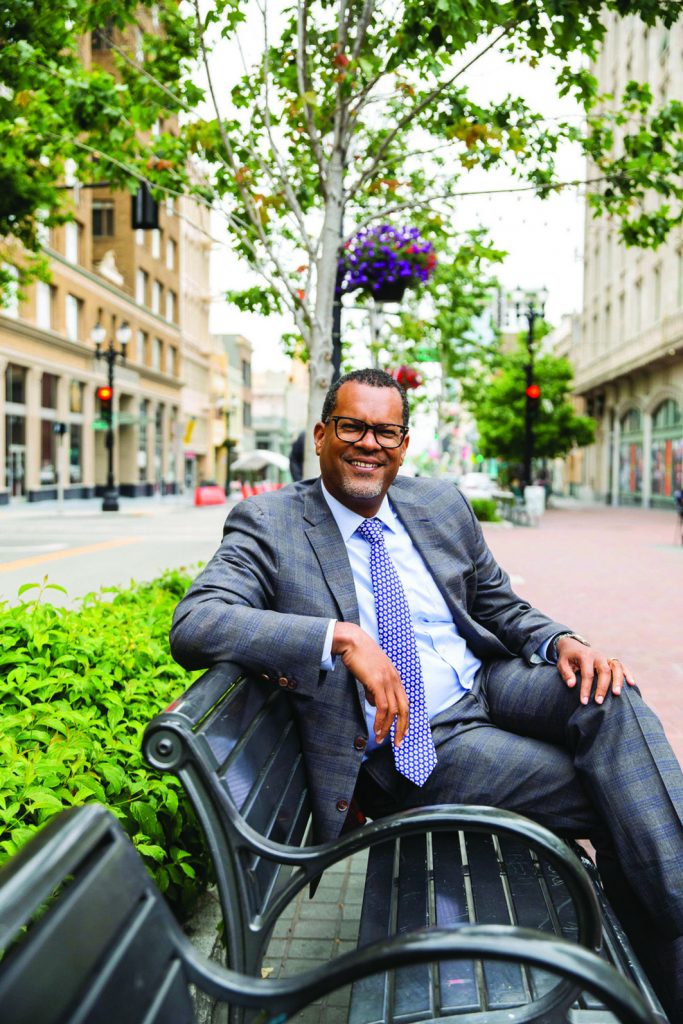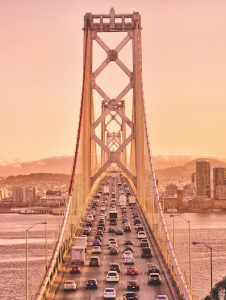A Life Spent Trying to Solve the Bay Area’s Biggest Problems

Fred Blackwell, CEO of the San Francisco Foundation, grew up in Oakland and did not consider himself the smartest or most talented among his peers. But he says that many around him ended up locked out of opportunity, and some even ended up dead or incarcerated.
“Where you live matters,” says the activist and one-time top administrator of the city of Oakland. “The advantaged across the Bay live 12 to 17 years longer. California has some of the worst income inequality in the U.S., and the Bay Area has the worst income distribution in California.”
It is for these reasons that advancing racial and economic equity has long been core to the San Francisco Foundation’s mission.
With $1.9 billion in assets and $166 million in grants last year, Blackwell, his team and the donors who partner with the foundation are collectively investing in an inclusive Bay Area.
The following conversation explores Blackwell’s thoughts on philanthropy and where the San Francisco Foundation is headed.
You are an Oakland native, served in city government there, and taught at UC Berkeley. You are clearly a product of the Bay Area. How has this informed your work at the foundation?
I grew up in a family of people who were pretty active in Oakland from a political and civic point of view.
I went to City Council meetings when I was young. I walked precincts for people running for elected office. I spent hours upon hours in community meetings. I went to a school in Oakland that was run and founded by the Black Panther Party.
So, I didn’t just think about social justice issues in the abstract. I thought about them very specifically within the context of the place that I was growing up in and playing in and, later on in life, working in.
And so, for that reason, the mission of the San Francisco Foundation really resonates with me because it’s at that perfect intersection of place and geography, focusing in on the Bay Area, but doing that from a vantage point that’s really about social justice and improving outcomes for folks who are sometimes locked out of opportunity.
In response to the pandemic, many local foundations, including the San Francisco Foundation, dramatically changed their grantmaking. How are you working to make these changes lasting at the foundation you run?
There are a number of things that we did to be responsive to the moment. We’re proud of this work, and we also understand that the actions of any one institution were going to be a drop in the bucket compared to the avalanche and waves of need that we were witnessing.
We increased spending from our endowment to provide emergency relief funding to a predesignated group of 25 organizations in the Bay Area that we knew were well-positioned to do crisis response. We collaborated with other community foundations in the Bay Area to provide opportunities for our donors and their donors to contribute more during this time and dedicate those dollars to basic needs like food, shelter, clothing, and cash. We created a COVID-19 Emergency Response Fund for nonprofit organizations that were responding to the moment – a fund that was modeled after the Rapid Response Fund that we launched in 2016. Lastly, we use our voice to make sure that we’re doing everything we can so that our recovery is equitable, and so that we push for a more aspirational view of what our society can be instead of just going back to normal.
What will philanthropy’s role be in recovery writ large? What are the strategies you would like to see your peers in individual and institutional philanthropy adopt?
Over the last year, we’ve seen many statements and dollar commitments being made, and more organizations stepping into the fold.
Because we have been focused specifically on racial equity since 2015, we have an obligation to share what we’ve learned and to give people insight into the operational challenges that we’ve experienced.
We hope that there’ll be many more philanthropic institutions that will arrive at the bus stop that we’re at today, but that when they arrive there, we shouldn’t still be there; we should be moving on to the next stop. And so, we are actively asking ourselves the question: How can we be even more bold and ambitious than we’ve been in the past around this agenda?
The foundation’s equity agenda is focused on racial equity and economic inclusion in the Bay Area. Can you please describe the equity agenda and why it’s important to the communities you serve?
Very early on in my tenure at the foundation, we held listening sessions in different parts of the region to hear how residents, nonprofit partners, and policy people would describe the issues on the horizon and how the foundation might be able to respond to those issues. And in all of those meetings, there were certain things that came up every time: housing, economic opportunity, but also race. We also took the important step of collecting a lot of data disaggregated by race, gender, issue, and geography, and the data really aligned with what we were hearing from the community.
We then spent the following year operationalizing what we heard, and what the data showed. And we came up with three pathways to racial equity and economic inclusion in the region: people, place, and power. The “people” work is about how we can create a greater sense of upward economic mobility in the region, lift the floor, and improve working conditions for low-wage workers. The “place” work is about being responsive to concerns around gentrification and displacement, including cultural displacement. And the “power” work is about organizing, supporting movements, and supporting leadership development. So, that’s the way we’re organized, and this structure and these priorities provide the underpinning for the work that we’re engaged in today.
Why should donors partner with the San Francisco Foundation?
Issues can come and go. Even organizations can come and go. Elected officials get elected and reelected and then challenged, and so they come and go.
But every community needs an institution that has the ability to problem-solve for that community, has the ability to communicate with the diversity of stakeholders that exist, and the ability to mobilize resources to respond to the issues of the day.
And that’s what the San Francisco Foundation represents for the San Francisco Bay Area. It represents an organization that has proved over time that it can identify, respond to, and organize community around the issue of the day, and to do that with rigor, strong leadership, a solid reputation that has stood the test of time, and an ability to steward both present-day and future resources. And so, that is why I really think that the San Francisco Foundation is important to the Bay Area’s ability to continue to grow and thrive and reach its full potential.
In your mind, what is the real power of philanthropy?
While grant dollars are, of course, needed, the real impact of a foundation goes beyond just contributing dollars and really trying to figure out how you leverage all the relationships and tools that the foundation has to offer to try to move the needle on a particular issue.
